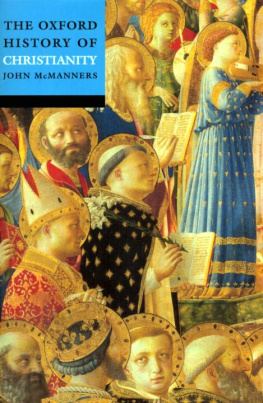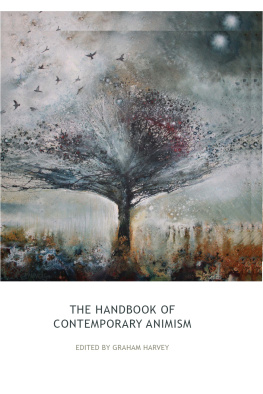Christianity and Animism in Melanesia
Ken Nehrbass has given the churches in Melanesia a wonderful gift. We desperately need ethnographically rich studies like this that help us understand how Melanesians can become fully followers of Jesus while expressing their faith in culturally appropriate ways. Christians from animistic societies around the world live with the terrible tension of dual religious systems which creates a split-level Christianity. They are Christians at one level but their underlying animistic worldview has yet to be transformed by gospel values. We know that the gospel affirms most of culture, critiques some of culture, and transforms all of culture. Nehrbass has demonstrated how this has happened from the earliest days of missionary contact to the present on the tiny island of Tanna in Vanuatu, in the South Pacific, but his study has important implications far beyond Melanesia and is likely to become a classic in the literatures of gospel and culture.
Darrell Whiteman, Author of Melanesians and Missionaries
Vice President and Resident Missiologist, The Mission Society
Atlanta, Georgia
Christianity
and Animism
in Melanesia
Four Approaches to
Gospel and Culture
KENNETH NEHRBASS

Copyright 2012 Kenneth Nehrbass
Christianity and Animism in Melanesia: Four approaches to gospel and culture
All Rights Reserved. No part of this work may be reproduced or transmitted in any form or by any meansfor example, electronic or mechanical, including photocopying and recordingwithout prior written permission of the publisher. The publisher does not maintain, update, or moderate links and/or content provided by third-party websites mentioned in the book.
Scriptures marked NIV are taken from the Holy Bible, New International Version, NIV. Copyright 1973, 1978, 1984, 2011 by Biblica, Inc. Used by permission of Zondervan. All rights reserved worldwide. www.zondervan.com. Contemporary English Version, 1995. New York: American Bible Society. Used by permission.
Published by William Carey Library
1605 East Elizabeth Street
Pasadena, CA 91104 | www.missionbooks.org
Kelley K. Wolfe, editor
Brad Koenig, copyeditor
Carl Crooks, graphic designer
Rose Lee-Norman, indexer
Kenneth and Mendy Nehrbass, interior photos
David Ringer, back cover photo
Gordon Russell, author photo
William Carey Library is a ministry of the
U.S. Center for World Mission
Pasadena, CA | www.uscwm.org
Digital eBook Release Primalogue 2015
ISBN 978-0-87808-874-4
Library of Congress Cataloging-in-Publication Data
Nehrbass, Kenneth.
Christianity and animism in Melanesia : four approaches to gospel and
culture / Kenneth Nehrbass.
p. cm.
Includes bibliographical references.
ISBN 978-0-87808-407-4
1. Tanna Island (Vanuatu)Religion.
2. AnimismVanuatuTanna Island.
3. ChristianityVanuatuTanna Island.
4. Christianity and cultureVanuatuTanna Island.
I. Title.
BL2620.M4N44 2012 261.29925dc23
To my parents, Dick and Marilynn,
who encouraged me to be a lifelong learner.
Break down their altars, smash their sacred stones and burn their Asherah poles in the fire; cut down the idols of their gods and wipe out their names from those places. You must not worhip the Lord your God in their way. But you are to seek the place the Lord your God will choose from among all your tribes to put his Name there for his dwelling. ~ Deuteronomy 12:35, NIV
~
When I preach, I encourage people to hold on to kastom... The house of prayer should promote tupunas [sacred stones] and tamafa [incantations]. ~ Joshua, a pastor from Tanna
Contents
Many vernacular terms in this book are represented in the Southwest Tanna orthography. Special characters are explained below. (Note that Appendix A contains a short glossary of vernacular terms that appear frequently throughout this book.)
Schwa; sounds like the u in cut.
High central unrounded vowel; sounds like e in roses.
g Voiced velar nasal; sounds like the ng in sing.
v High central unrounded semivowel; sounds almost like w in we, but unrounded.
AG Assemblies of God
CCC Campus Crusade for Christ
LDS Latter Day Saints
LMS London Missionary Society
NT New Testament
NTM Neil Thomas Ministries
OT Old Testament
PCV Presbyterian Church of Vanuatu
PRC Presbyterian Reformed Church
SIL Summer Institute of Linguistics
YWAM Youth with a Mission
T his book deals with issues that are of great concern to missionaries and local peoples across Melanesia and the world at large. While the focus is on the Island of Tanna in Vanuatu, the issues are the same across the length and breadth of Melanesia, stretching from Fiji in the east to the Moluccas Islands (in Indonesia) in the west. Understanding traditional experience in contrast to the missionary response to spirituality is a crucial missiological issue in our day. Despite over a century of mission dominance and an apparent acceptance of the gospel message, churches throughout Melanesia quickly become nominal and people continue to rely on traditional sources of power. Therefore, it is crucial to understand how contemporary churches can maintain a dynamic interface of culture and biblical awareness. Dealing with Scripture in the contemporary reality of living life as God intended provides the rationale for the case study in this book.
On Tanna, as in much of Melanesia, two religions now reside side by side; traditional animism and missionary-introduced Christianity (Tippett 1967; Trompf 1987). Both religions reflect the cultural environment that spawned them; thousands of years of interaction with spiritual forces and their influence on enabling people to survive in their physical, social, and psychological world; and two thousand years of Christian expansion structured to reflect Greco-Roman philosophy in categories that reflect missionary understanding but have little relevance to local peoples. It is this tension between local and Western worldviews that structures Dr. Ken Nehrbass excellent book. Sadly, the missionaries encouraged people to abandon kastom and embrace Christianity. This forced people to make unfortunate choices resulting in split-level Christianity (Hiebert, Shaw, and Tienou 1999, 15ff). This dual perspective creates a dynamic syncretism which enables people to separate Christianity from the way they live their lives. The result is a lack of understanding of Scriptural perspectivesGods perspective. The Bible is all about God enabling people with whom he communicated to worship him appropriately in contrast to performing ritual to get something they want. God gave Israel many kastoms all with the focus of acknowledging and worshiping him. Nehrbass clearly presents this development in Chapter 1. This is closely juxtaposed with an anthropological understanding of animism as a religion of the people in Chapter 2. In focus, then, is how people respond to God as a product of their beliefs and values, not which worldview (local or Christian) they subscribe to. How people steeped in the reality of life process Scripture is far more important, for them, than the ideas the missionaries brought, as Trompf has made clear (1987, 56).
In our contemporary, globalizing world, the people of Tanna and Melanesia in general cannotmust notignore the rest of the world. Like missions in the past, a ubiquitous globalization now frames most things people do. However, they still live their lives in a particular context endued with their traditions and lifestyle expectationskastom. This is the context within which all outside influence must be evaluated. It is this understanding of context and the role of the gospel, encased in Scripture, that Nehrbass seeks to make sense of. Both are critical to the well-being of people who come to church whenever the bell rings and maintain their identity in the context of a spiritually, socially, and emotionally charged reality.







